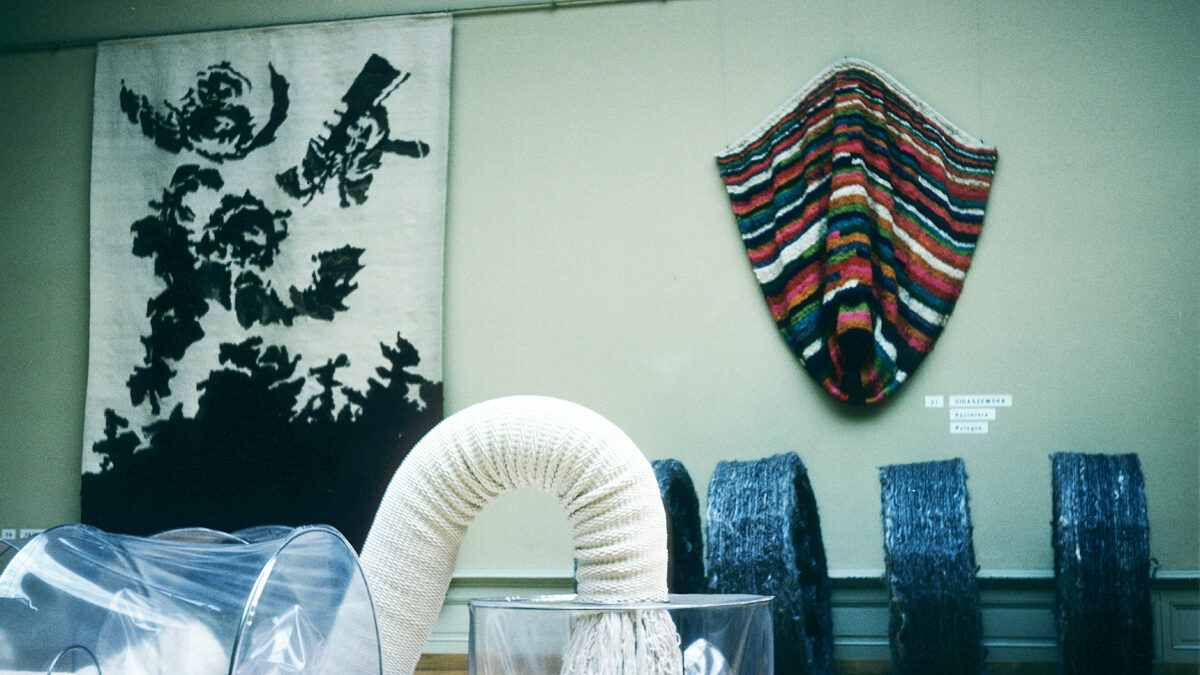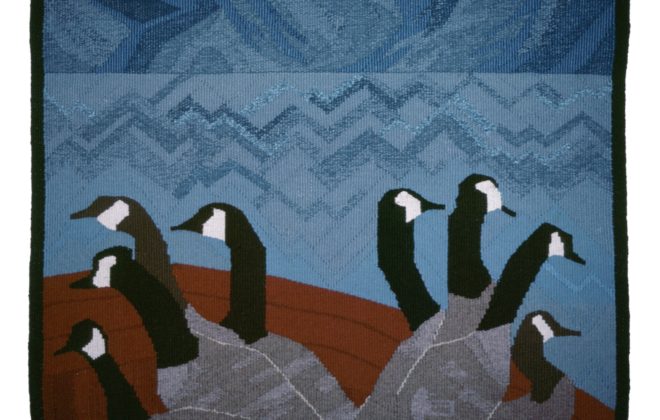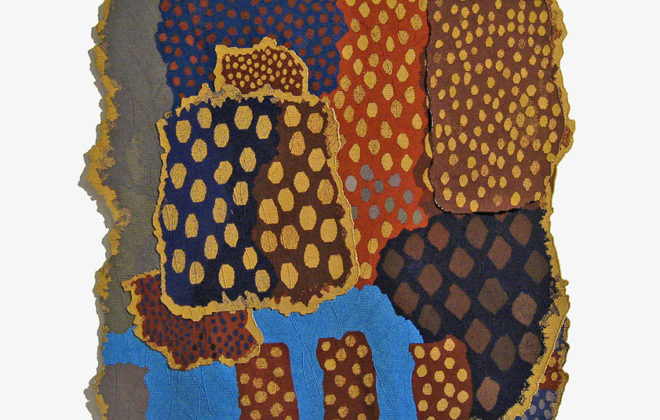Is it a tapestry? Yes.
It makes you want to scream. If you type ‘tapestry’ into Amazon, you find that a tapestry can be yours for £4.99! Often they are described as ‘hippie’ or ‘mandala’ and may be 100% polyester. One site states, ‘Hang your tapestries up, use them as a tablecloth, picnic blanket, cover and more.’
One of the other big villains in the improper use of the word tapestry is the marketing departments of manufacturers of embroidery kits, who must have thought that ‘tapestry’ sounded better, posher than embroidery. Google ‘tapestry kit’ and you will inevitably see reams of ones for cross stitch and needlepoint, complete with all materials and instructions. Sometimes they are even copies of or are ‘inspired by’ actual historic tapestries, such as the Lady and the Unicorn.
Another culprit is community projects such as the ‘Great Tapestry of Scotland’. These worthy endeavours allow amateur embroiderers to collaborate, each making a section of a huge work, usually to a pattern they are provided with by the overall designer. It’s still not a tapestry, although it has the tapestry-like attributes of being large and having a narrative.
The Bayeux ‘Tapestry’ is a wonderful thing, but it is still an embroidery.
So here is the narrow definition of tapestry:
A handwoven weft-faced fabric made with discontinuous wefts, sometimes referred to a Gobelins (Gobelins, after the Gobelins Manufactory in Paris, which has created tapestries since the 17th century.)
Embroidery is created by stitching into an existing cloth, while tapestry weaving starts from nothing. Warp yarns are stretched onto a loom or frame, then wefts are interlaced with the warps and completely cover the warps, with the image created as the fabric is woven.
All that said, there is also a broader definition of tapestry. From 1962, the Biennales internationales de la tapisserie in Lausanne pushed the boundaries of fibre art, allowing textile work which might have no weaving in it at all. The most prominent fibre artists were shown, exhibiting often monumental work, often three-dimensional and often without any tapestry weaving included. (The featured image is from the 7th biennial in 1975.)
I would define tapestry as any work of art which includes fibre and/or interlacing, in however small amounts, with paper classified as fibre as well, since it is made of fibres.
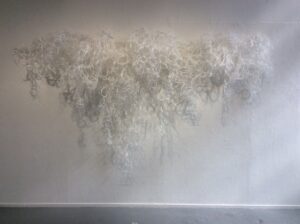
Fiona Hutchison, the Edge of the Ocean, plastic recycled baling strapping
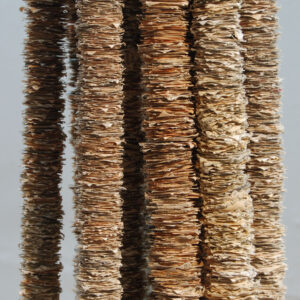
Jo McDonald, What’s the Story, detail, paper
The Tapestry Department of Edinburgh College of Art taught every student to weave, but after that anything went. It was about executing your idea in the best way possible, which included non-textile methods. There has to be a point to weaving a tapestry, in particular since it takes such a long time to do. Art is about breaking rules, not sticking to them, and that includes definitions and categories.
So this means that even embroidery can be a tapestry work of art, if it is excellent quality, if it is designed by the maker and is a creative response to the medium. Anything which is a textile work of art is, but nothing else is.


